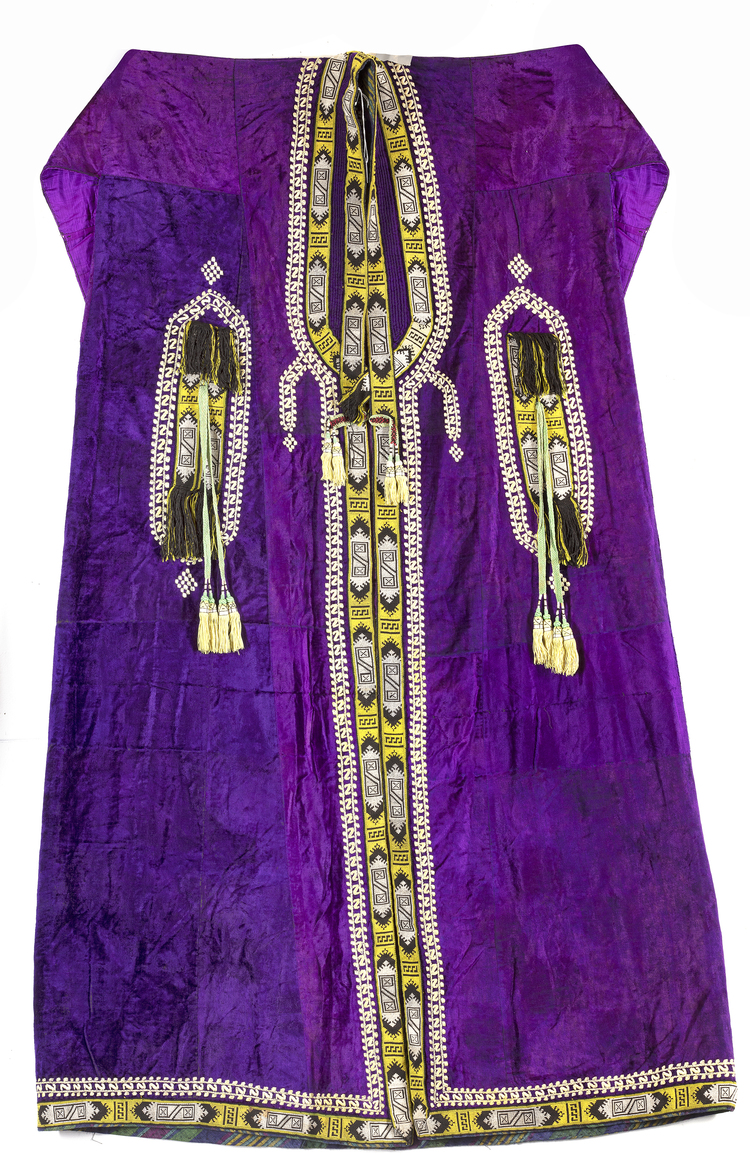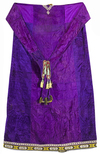A WOMAN'S PARANJA, UZBEKISTAN, 20TH CENTURY
The paranja was a cape-like garment with long false sleeves that were fastened together and hung down the length of the back. Draped over a woman’s head, it was designed to envelop her completely. Most paranjas were made from “banoras” – a handwoven, silk warp/cotton weft cloth with narrow black pin stripes on a dark green, blue, or gray ground. Except for any embellishments such as tassels and embroidery, the overall look was rather drab.This elegant paranja is the exception. Made of lustrous taffeta that appears purple depending on the light, it was no doubt worn by a well-to-do woman on special occasions.While the outside of the paranja usually presented a rather plain face to the world, the inside was often lined with imported Russian printed cotton. The variety of patterns seemed endless, and often they were strikingly beautiful – seen only by the woman who wore them. The body of this paranja is lined with a traditional paisley print. However the wide facing material is unusual – the pattern was obviously inspired by a Japanese design.
150 cm length.


